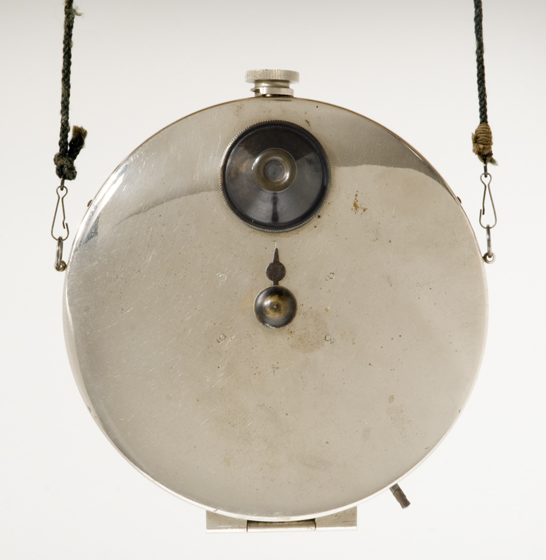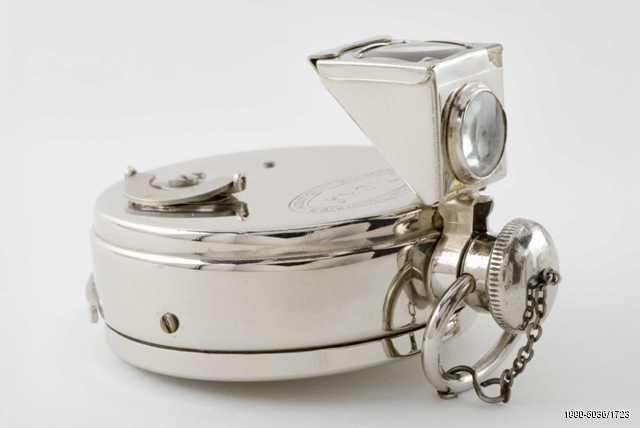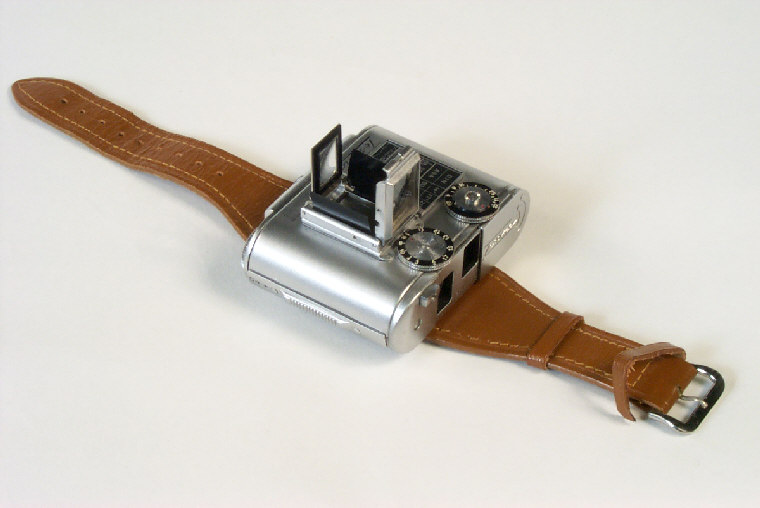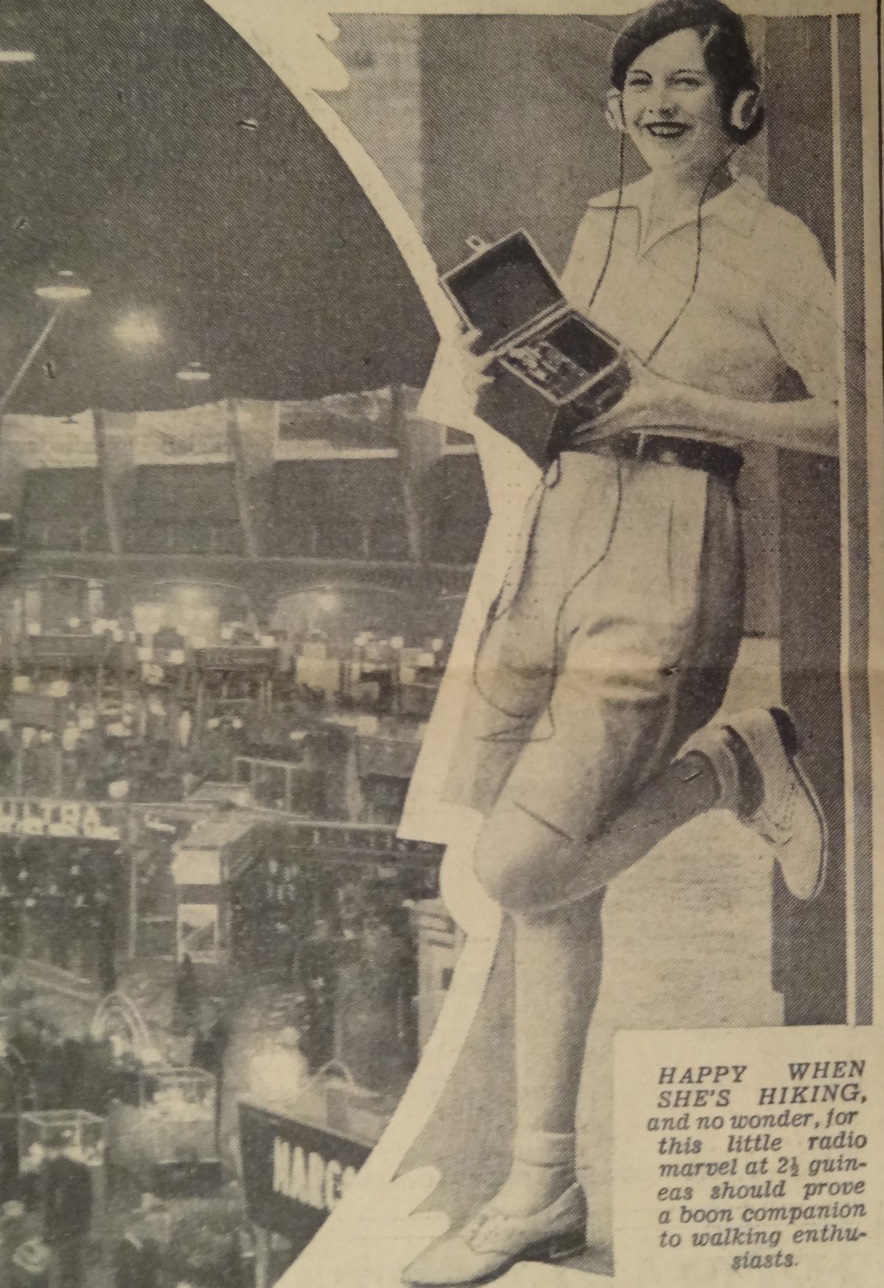As someone without a background in photography, film, television, or media, I often find myself mystified by the objects I deal with on a daily basis. However, I regularly come across material that no amount of expertise can prepare you for. In this series I’m going to highlight some of the weird and wonderful objects I come into contact with down here in the museum’s collection stores.
Wearable Technology
The theme of our latest Lates event was wearable technology, and it was fantastic to see all of the latest examples of gadgets that were portable enough to be kept on your person at all times. We’re all familiar with obvious examples, such as smart watches and wireless headphones, but a few surprising examples included smart rings and virtual cycling. I ran a stall showing some examples of wearable tech in our collections to show that this idea of gadgets you can wear is not by any means new. In this post I thought I’d go through a couple of things that made up this stall (as well as a few extras).
Stirn Waistcoat Camera

As it says in my little introduction at the top of the page, I am not an expert in photography, film, or television. However, in my role I am responsible for the enquiries that come to us from the public; asking about our collection, or looking for specialist advice. Luckily we have great research resources here, as well as knowledgeable colleagues, and so I’m constantly learning more about our collections and their associated histories. I bring this up because in my very first week in this role someone sent me a picture of a camera, much like this one. They had found it in their attic, and wanted to know what it was. I have to admit, it took a while of looking at it before ‘camera’ even came to my mind. When I show our version of this object during tours, most people ask me if it’s some sort of hip-flask, for obvious reasons; but it is indeed a fully functioning camera. This is the Stirn waistcoat camera, and it is part of a genre known as ‘detective cameras.’
The whole purpose of this camera is to allow discreet photographs to be taken. It would be worn around the neck and tucked beneath the waistcoat of the wearer. The lens would then poke through a button-hole and the whole contraption would be hidden. A dangling string would allow the wearer to take the photograph when they wished. The camera’s shape is so unusual because it recorded its images on a round glass plate. This plate rotated with each exposure, allowing between 4 and 6 photographs to be taken (depending on the model) on a single plate.
So the question is: why would someone be using a camera like this? I’ve shown this piece off on tours and I’ve received many different guesses. Some people ask if it was used by spies, others speculate that it was used by detectives; some others even ask if it was something perverts might have used! It’s quite possible that this camera was used for all of these applications (and more), considering that it was said to have sold 18,000 units by 1890.

Ticka Camera

When it comes to the Stirn Waistcoat Camera, I’ve often thought that it can’t be all that subtle. Even if it is more discreet than a big wooden box it is still going to be a noticeable bulge in the jacket/waistcoat of the photographer. The Ticka camera is a great improvement on that, as it is the size and shape of a gentleman’s pocket watch. The lens is disguised in the winder, and the end is actually the cap for the lens. It used tiny film negatives and could take 25 pictures on a single cartridge. However, the small size of the negatives meant that by the time the image was blown up to a regular size the quality was quite poor.

Steineck ABC Camera

This is a Steineck ABC camera—a must-have for spies, according to some. This is one of my favourite examples of wearable technologies in our collections as it’s something that I can imagine being sold now (are there camera watches on the market?) According the spy sites it would be held up as if someone were checking what time it is while they would take a sneaky exposure. It had two settings, bright light and dim light, and like the Stirn Waistcoat Camera took images onto a rotating disk. This camera could actually manage eight separate exposures on a single film disk less than 3cm. The fact that you could cut out the disks from existing film formats instead of buying pre-made ones made this very versatile. It also would have had accessories including filters and a zoom lens. Whether any real spies would have used something like this I have been unable to determine (which is probably the point!)
Tessina Camera

Though it may look less subtle than the ABC Camera, the Tessina was actually designed by the same person, Dr Rudolph Steineck. Like the ABC camera its most novel feature is that it was mounted on a leather strap and worn like a wrist-watch. However, it appears that most of the time it would have been taken off the wrist strap to be operated, so perhaps for this camera the wearable aspect was more for portability and ease of use. One of its main attractions was its use of 35mm film, which was inserted into the camera in special cassettes. This allowed the camera to use a more standardised film format than other miniature cameras, and the photographer could easily wind any 35mm film into an empty cassette, meaning they didn’t have to rely so heavily on the manufacturers making a specific kind of film for the camera. It also produced results that reviewers claimed were close to the full size cameras of the time.
‘Happy When She’s Hiking’ Photograph

This image from our Daily Herald Archive illustrates that not only do we have examples of technologies themselves, but reception of the latest technologies. This is from a page in the Daily Herald from the 1934 Wireless Exhibition at Olympia, which was held to demonstrate the latest in technological advances.
The full page features giant valves and other marvels, but it is the advertisement of a portable radio ideal for walkers that is most relevant for this post. It’s a fairly self-explanatory advert, so the only thing I want to focus on is the fact that this is being marketed towards walkers, though I suppose it wouldn’t be useful for commuters or long distance travel due to the range of radio waves. While the radio seems laughably un-portable to our eyes compared to modern music players, I was unaware that you could listen to music on the go as far back as 1934, which I think is amazing.
See more objects on the Science Museum Group Collection Online website.